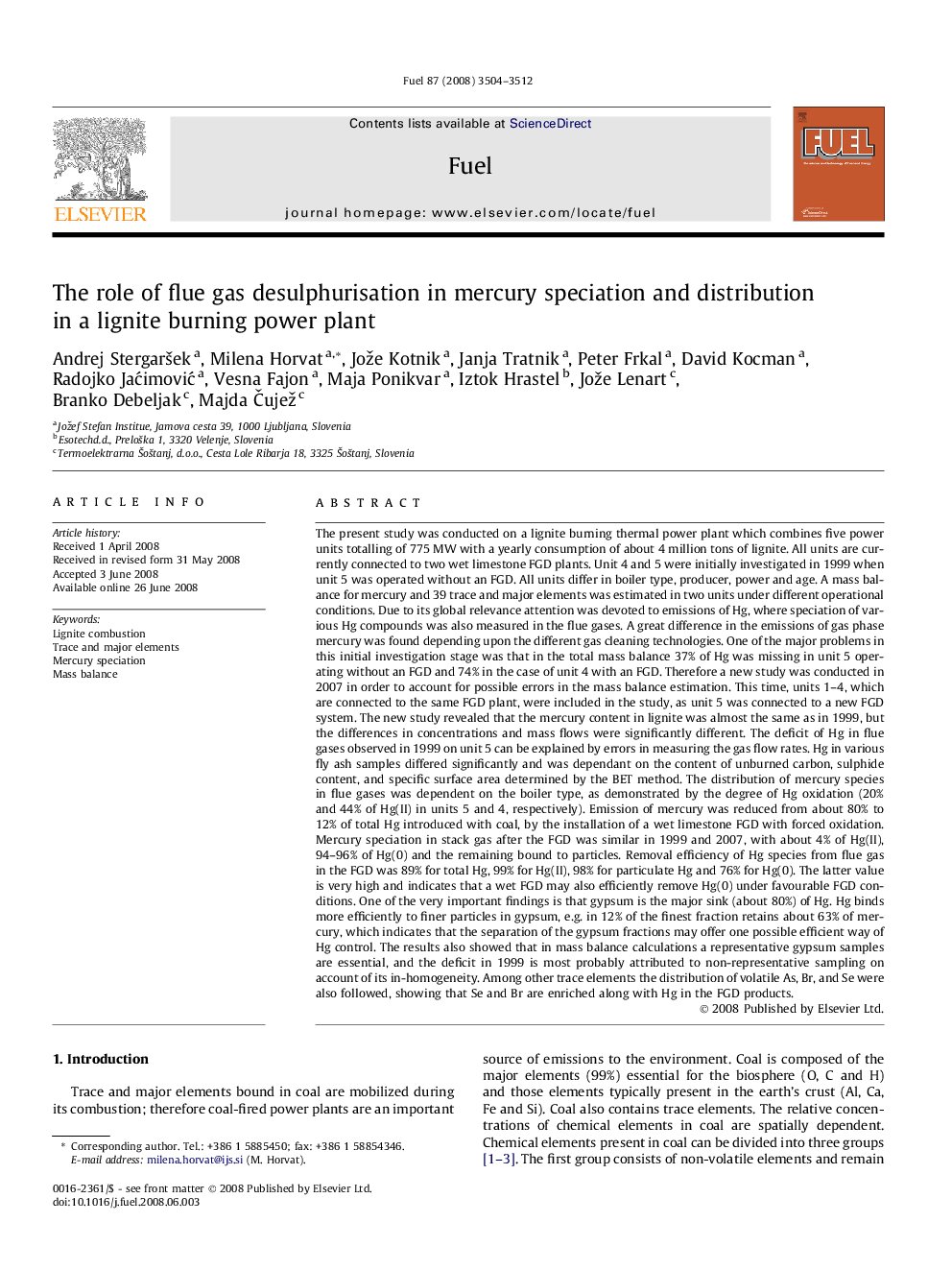| Article ID | Journal | Published Year | Pages | File Type |
|---|---|---|---|---|
| 207706 | Fuel | 2008 | 9 Pages |
The present study was conducted on a lignite burning thermal power plant which combines five power units totalling of 775 MW with a yearly consumption of about 4 million tons of lignite. All units are currently connected to two wet limestone FGD plants. Unit 4 and 5 were initially investigated in 1999 when unit 5 was operated without an FGD. All units differ in boiler type, producer, power and age. A mass balance for mercury and 39 trace and major elements was estimated in two units under different operational conditions. Due to its global relevance attention was devoted to emissions of Hg, where speciation of various Hg compounds was also measured in the flue gases. A great difference in the emissions of gas phase mercury was found depending upon the different gas cleaning technologies. One of the major problems in this initial investigation stage was that in the total mass balance 37% of Hg was missing in unit 5 operating without an FGD and 74% in the case of unit 4 with an FGD. Therefore a new study was conducted in 2007 in order to account for possible errors in the mass balance estimation. This time, units 1–4, which are connected to the same FGD plant, were included in the study, as unit 5 was connected to a new FGD system. The new study revealed that the mercury content in lignite was almost the same as in 1999, but the differences in concentrations and mass flows were significantly different. The deficit of Hg in flue gases observed in 1999 on unit 5 can be explained by errors in measuring the gas flow rates. Hg in various fly ash samples differed significantly and was dependant on the content of unburned carbon, sulphide content, and specific surface area determined by the BET method. The distribution of mercury species in flue gases was dependent on the boiler type, as demonstrated by the degree of Hg oxidation (20% and 44% of Hg(II) in units 5 and 4, respectively). Emission of mercury was reduced from about 80% to 12% of total Hg introduced with coal, by the installation of a wet limestone FGD with forced oxidation. Mercury speciation in stack gas after the FGD was similar in 1999 and 2007, with about 4% of Hg(II), 94–96% of Hg(0) and the remaining bound to particles. Removal efficiency of Hg species from flue gas in the FGD was 89% for total Hg, 99% for Hg(II), 98% for particulate Hg and 76% for Hg(0). The latter value is very high and indicates that a wet FGD may also efficiently remove Hg(0) under favourable FGD conditions. One of the very important findings is that gypsum is the major sink (about 80%) of Hg. Hg binds more efficiently to finer particles in gypsum, e.g. in 12% of the finest fraction retains about 63% of mercury, which indicates that the separation of the gypsum fractions may offer one possible efficient way of Hg control. The results also showed that in mass balance calculations a representative gypsum samples are essential, and the deficit in 1999 is most probably attributed to non-representative sampling on account of its in-homogeneity. Among other trace elements the distribution of volatile As, Br, and Se were also followed, showing that Se and Br are enriched along with Hg in the FGD products.
